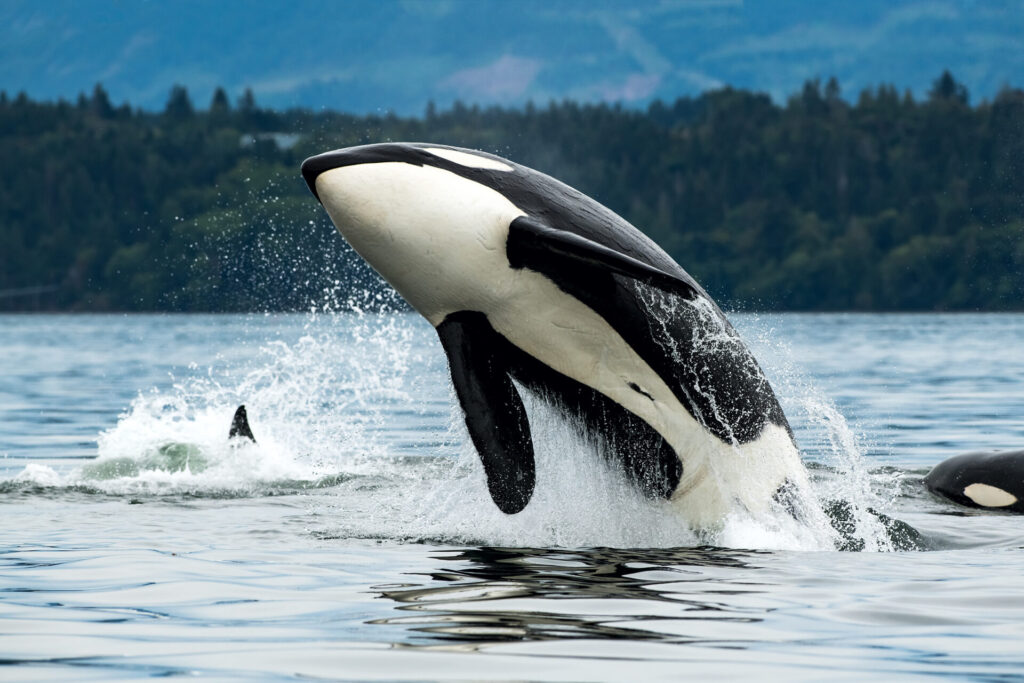Alaska is much more than a vast wilderness of ice and evergreens. This vibrant landscape is home to remarkable creatures on land, in the sky and at sea. So if whale watching surrounded by icebergs and peering for moose through lush trees sounds fun, you should consider an Alaskan cruise with Holland America Line (HAL).
“The best time to visit Alaska is May to September,” says Michele Moore, CAA Travel Consultant, “There is an increase in people wanting to visit, and HAL is a customer favourite.”
A wide variety of trip options are available, so if there is specific wildlife you hope to see, you can choose a cruise to your ideal destination.
“Seeing the wildlife was the most fun for me, especially the pod of orca whales far out in the ocean,” Moore tells us, “There were a wide variety of optional excursions as well as many included onboard activities, something for everyone.”
Are you ready to explore the north by sea and land? Here are eight majestic animals that live in Alaska and the best places to spot them.
Whales
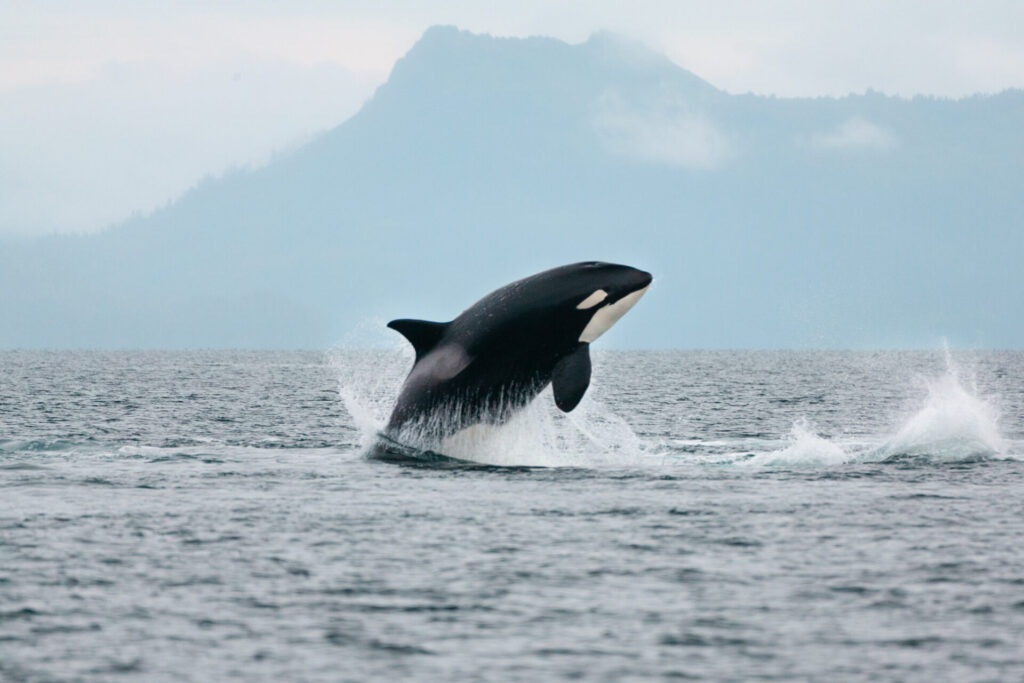
Orcas – also known as killer whales – and humpback whales are the two types you are most likely to see on a visit to Alaska. Their black and white colouring and triangular dorsal fin make them easy to spot.
On an Alaskan cruise, you’ll want to keep your eyes peeled for sprays of water on the ocean as they often swim along the surface, spouting every few seconds. Your best chance to spot orcas in Alaska is between early May and early June in Juneau, Ketchikan, and Seward.
Humpback whales know how to put on a show and can reach dramatic heights when they breach the water’s surface. It would be hard to miss if they’re making a splash, as these animals can be close to 50 feet long, weighing a whopping 35 tons. You can see them swimming anytime between May and September, but a sighting is most likely in June and July as they coast into Alaska’s Inside Passage.
Seals
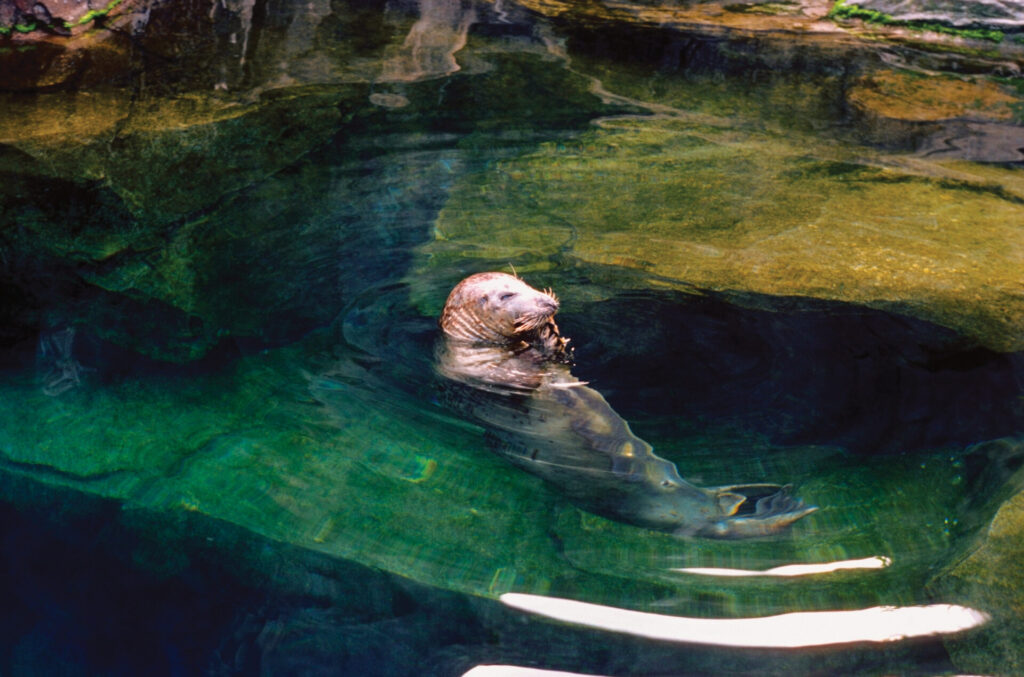
When they’re not hunting through the waters for a fresh meal, you’ll likely find harbour seals lounging on ice floes, beaches and sandbars. Unlike sea lions — which you may also spot by the Alaskan shore —these seals don’t have external ear flaps. Rather they have small ear holes that open and close when they dive so they have excellent hearing.
Kenai Fjords National Park is a great place to look for seals and other marine life, with spring and summer being the best seasons to catch a glimpse of them floating around.
Puffins
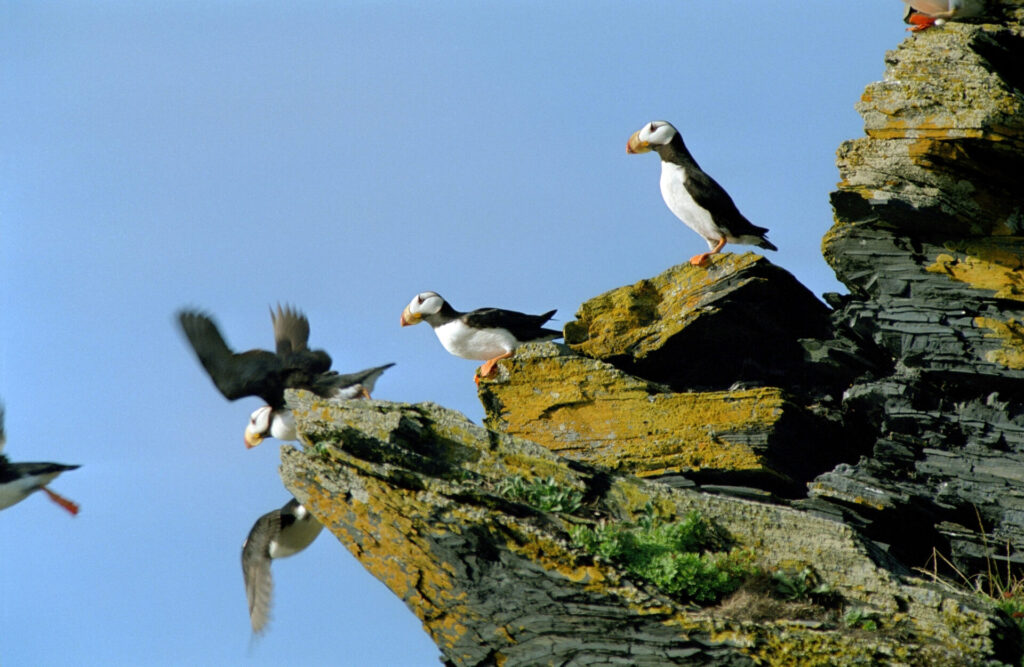
This coastal bird is renowned for its black and white feathers, bright orange beak and orange webbed feet. You’re most likely to see puffins between spring and fall, and the best place is the glacial paradise that is the Kenai Fjords National Park. Thousands of them nest along the cliffside there. They spend a lot of time at sea, so a great way to get a closer look is on a kayaking excursion.
Alaska is also home to an estimated 30,000 bald eagles that can be seen year-round, primarily when salmon spawn in the summer. In addition, you can be on the lookout for peregrine falcons, particularly nesting on cliffs or flying along the coastline of Alaska’s Inside Passage.
The Big Five
Alaska’s Big Five are animals you can find on land; moose, caribou, grizzly bears, gray wolves and Dall sheep. You might get a glimpse of these creatures in different parts of Alaska, but some of the best places to spot them are Anchorage and Denali National Park.
Moose
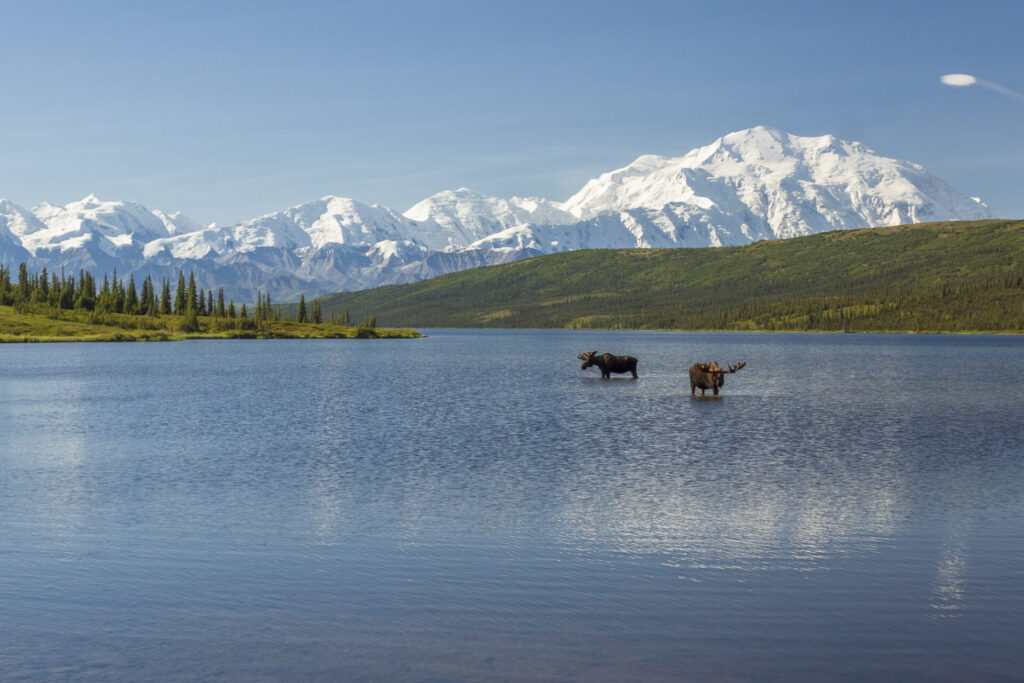
Moose are the largest of the deer family and the biggest of its species in Alaska. They can stand at six feet or more, weighing between 800 and 1,600 pounds, so seeing one in the wild can be intimating. Typically, their habitat is forested, but more and more, they can also be found in suburban areas.
You could spot a moose all year and look out for calves at the end of May. However, mating season is in late September into October, so you might see adult males fighting with their antlers competing over the females.
Caribou

Did you know Alaskans only refer to caribou as reindeer when domesticated? They are the only member of the deer family where both males and females grow antlers. You’ll notice that the males are larger, weighing between 350 and 400 pounds, whereas females average 175 and 225 pounds.
There are 32 different herds across the state, and the largest of them, the Western Arctic Herd, is thought to include about 325,000 animals. The Denali Herd usually stays within the national park and has about 1,700 caribou.
Grizzly Bears
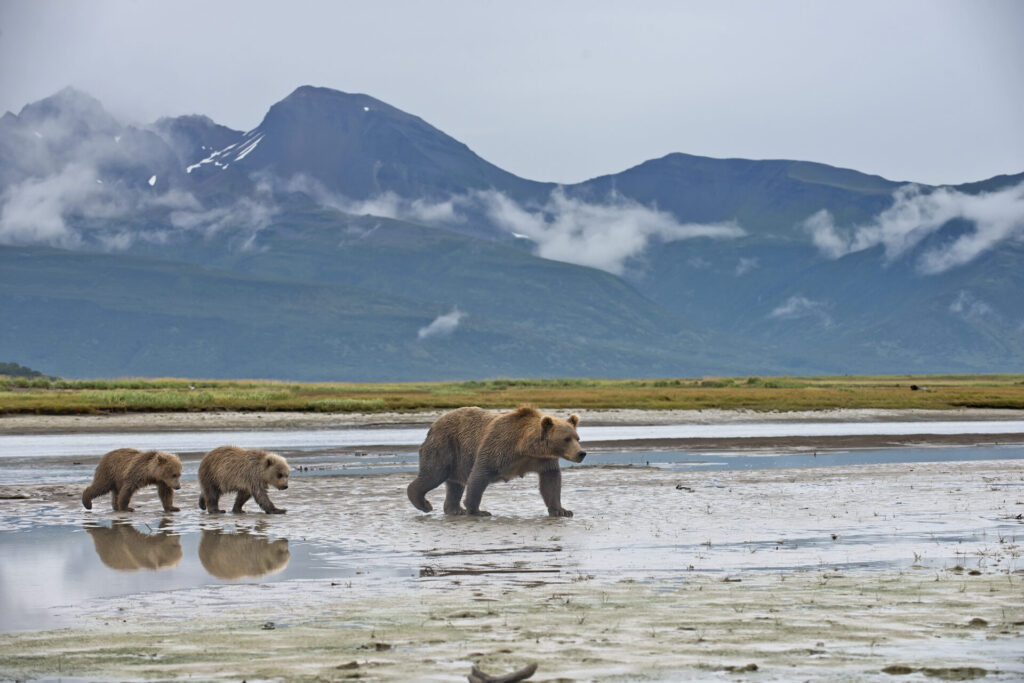
Grizzly Bears have a hump at the shoulders, a flattened face and long claws coming out from the front paws. They are called brown bears in Alaska, with the term ‘grizzly’ reserved for the ones found in the state’s interior. Females can weigh up to 500 pounds and males up to 800 pounds, as tall as a towering seven feet.
Bear sightings in Alaska often coincide with salmon spawning season in the summer, as they venture to the water for food.
Gray Wolves
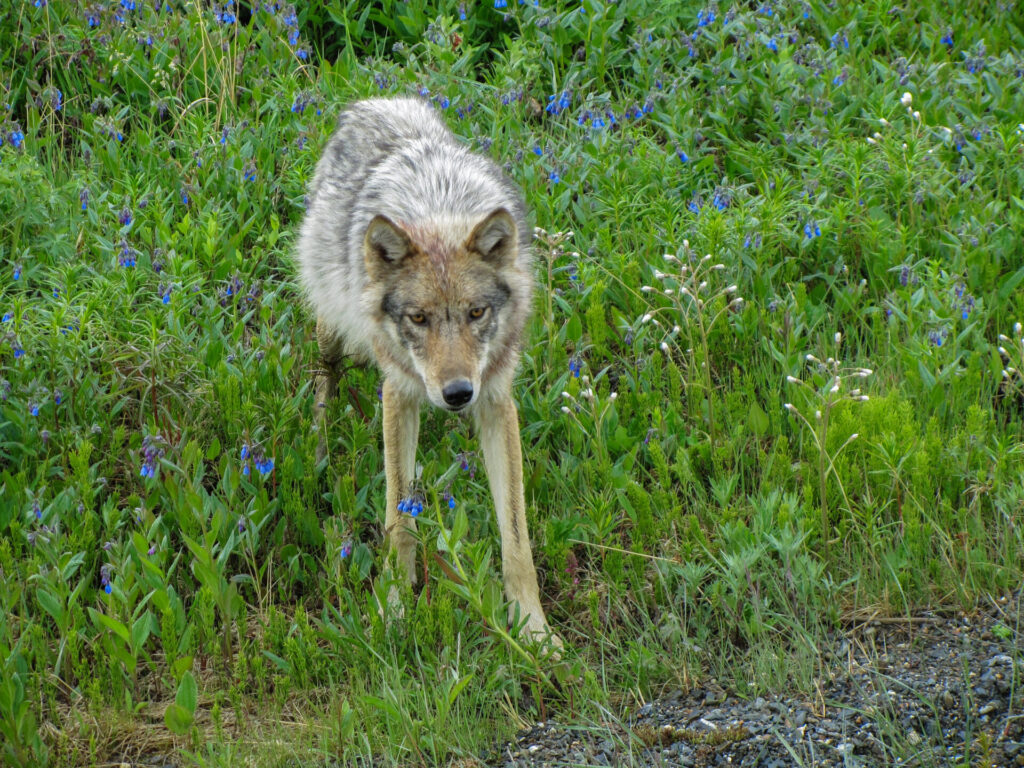
While wolves’ coat colour varies, gray wolves are the most common in Alaska. These animals are predators and scavengers, feeding on animals from moose and caribou to smaller animals like rabbits and beavers. While they are active throughout the year, spotting these pack animals is unpredictable.
Dall Sheep
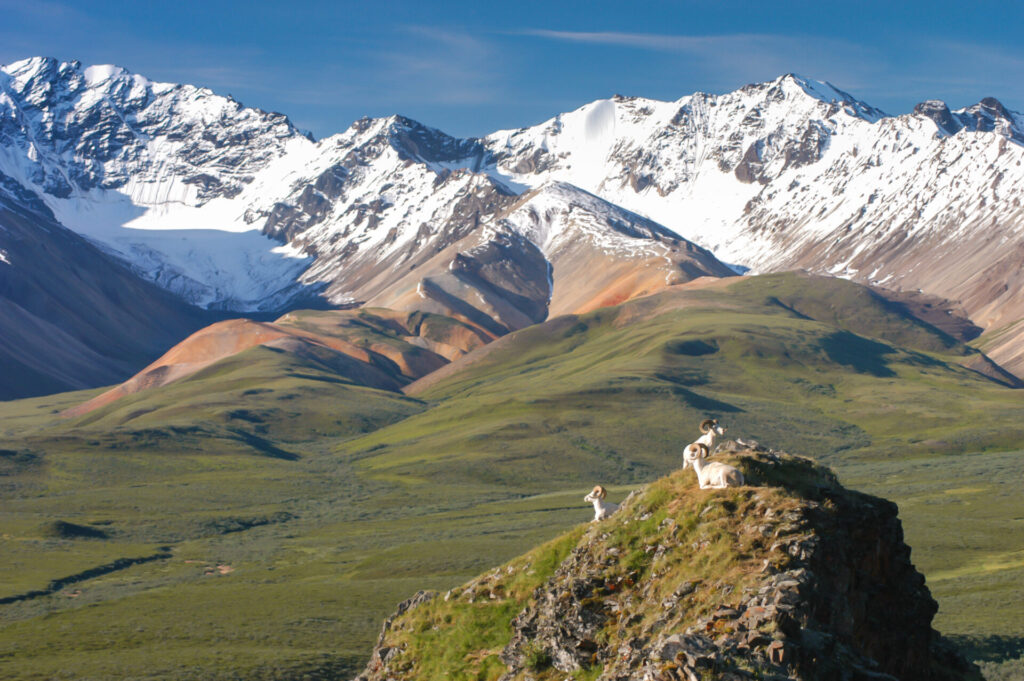
You’ll want to look up to try and spot these Dall Sheep with amber horns as they spend time in mountainous areas. They seem to have the balancing skills of a gymnast as they cling to jagged, rocky edges, feeding and relaxing on ridges and slopes, hiding from predators behind rocks. The males grow big, curled horns to compete against each other for the females.
Excited about the idea of seeing Alaskan wildlife?
You can book an appointment with a CAA Travel Consultant online or call 1-800-705-1803 to start planning your cruise to Alaska with Holland America Line.

